The second season of Star Trek: Discovery has come and gone, and with it came 14 episodes that featured a sweeping overarching narrative, deep-cut Star Trek references, and a renewed focus on the familial bonds of a starship crew. All welcome additions, sure, but just how good was the season?
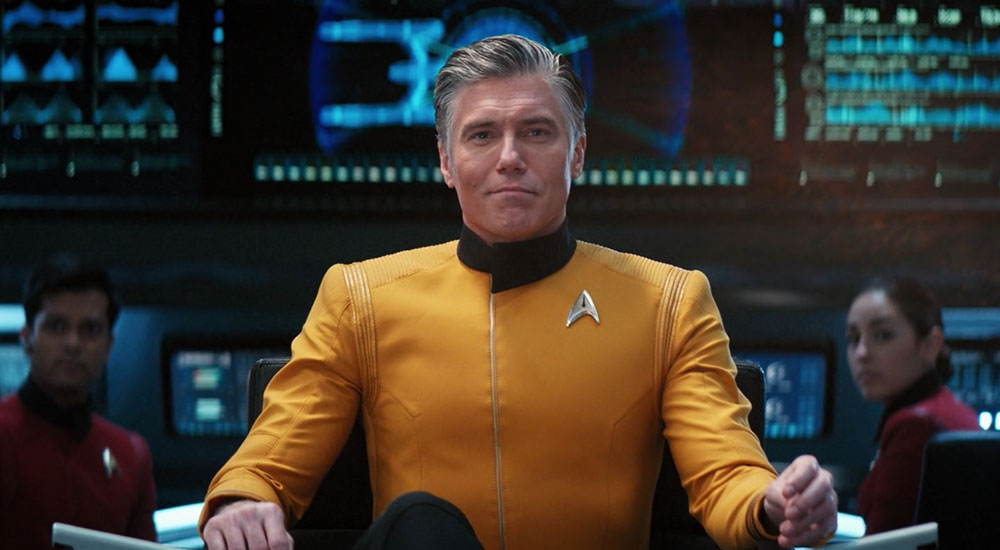
Anson Mount as Captain Pike (CBS)
Beam Us Up
The most obvious addition to season two was the person sitting in the center chair: Anson Mount as Captain Pike. Simply put, the decision to incorporate Pike into Discovery was the highlight of the season. Not only was the character himself ripe for expansion considering Discovery‘s place in the Star Trek timeline, but Mount brought charm, intelligence, gravitas, and authority to a character that, despite his legendary status in Star Trek fandom, was only seen relatively briefly. Mount used this to his advantage, putting a spin on Jeffrey Hunter’s Christopher Pike that allowed him and the writers to flesh out the character far more deeply than anyone likely expected.
Pike’s defining moment came when he was forced to confront his unexpected fate that the audience already knew about: Pike’s debilitating accident. Pike’s courage in the face of his future is inspiring; he chose to help Discovery complete its mission instead of opting out of this gruesome fate. Admiral Cornwell wasn’t joking when she said Pike represented the best Starfleet had to offer. There’s currently a fan petition to get CBS to produce a Pike television series set onboard the Enterprise, and after Pike’s role in season two, it’s easy to understand why fans have grown so attached to him.
With Pike came another legacy Enterprise crew member: Spock. It took awhile before we actually got to know Spock and Ethan Peck‘s performance, but once we did, it was clear Peck was dedicated to honoring the legacy of Leonard Nimoy while providing an emotional edge that was unusual for the character. Spock is going through some emotional turmoil in season two, which allows Peck to be more dramatic and emotionally complex. This, combined with Spock’s shaggy appearance in Discovery, is a great way to distinguish the character from elsewhere in the franchise. And while we mostly saw Spock in this different, emotional role, the very end of the season saw him settle perfectly into the role we know and love – and even having Burham prophetically ask Spock to seek out the person most opposite him, and allow that person to bring balance to his life. Captain Kirk to the bridge! Having Spock stroll out onto the Enterprise bridge in the season finale, equipped with his classic, clean-shaven look, is an expertly crafted transition to The Original Series.
The third Enterprise crew member who was hyped before season two, but ended up being short-changed a bit, was Number One (Rebecca Romijn). Ultimately, we only saw her in three episodes: “An Obol for Charon,” and then the two-part finale. It was nice to see the character at her station and interacting with Captain Pike, especially on the bridge of the Enterprise, but one can’t help but feel Number One’s treatment here was a half-hearted attempt at fan service, rather than an intricately written part of the show like Spock and Pike.
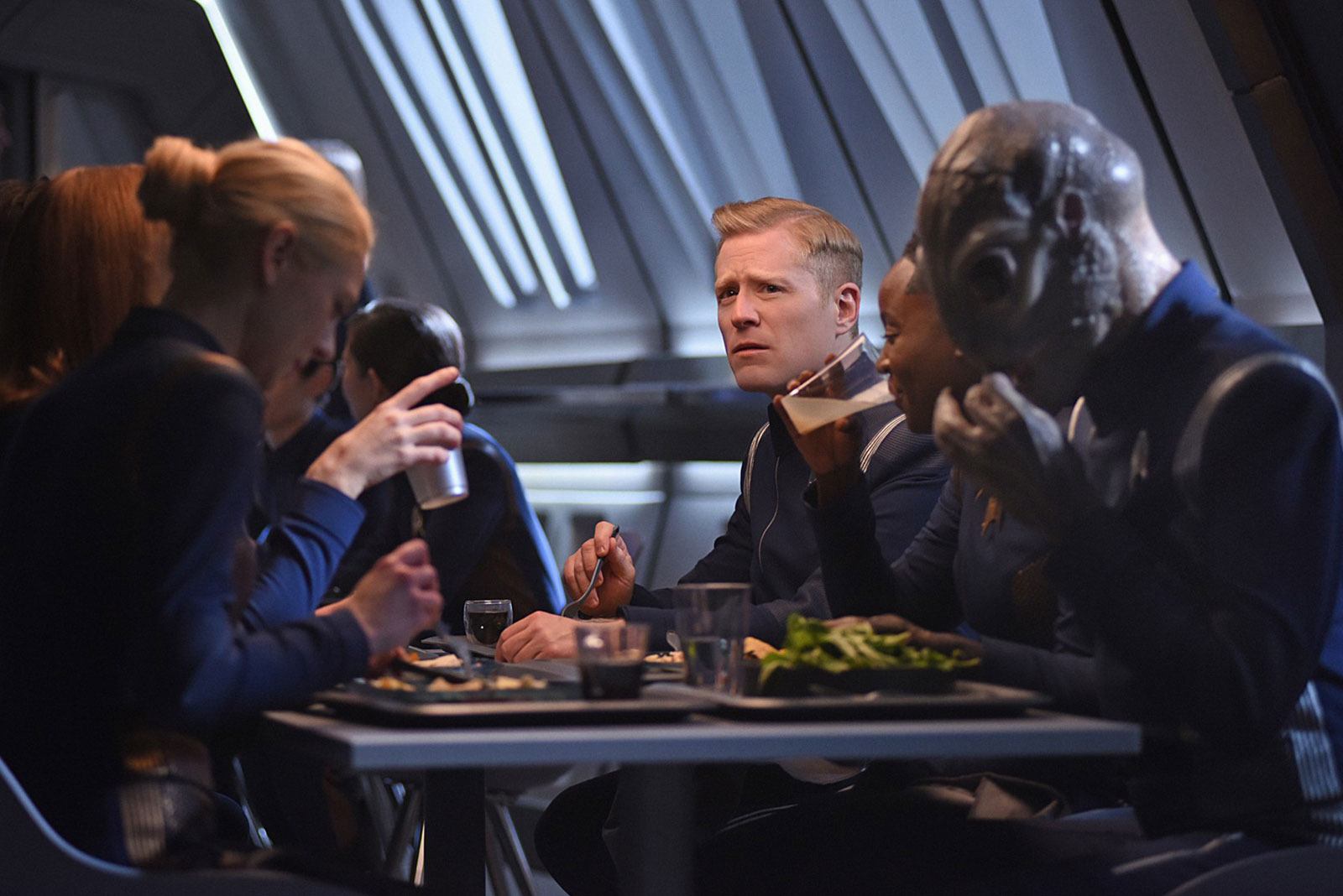
Anthony Rapp as Paul Stamets (CBS)
“You’re all astronauts on… some kind of star trek?”
Most fans will probably agree that this season saw Discovery finding its grove in its storytelling, at least compared to classic Star Trek. There were a couple episodes that were immediately reminiscent of Berman-era Star Trek. With a few tweaks, these episodes, such as “New Eden” and “An Obol for Charon,” could have stood on their own as standalone adventures. Even more episodes saw the crew resolve their problems with the typical Star Trek tropes: teamwork, optimism, bravery, sacrifice, intelligence, and yes, technobabble (although we should note that the technobabble in Discovery is much more useful than other Star Trek. Discovery uses many real-world or quasi-scientific concepts in its babbling). Compared to the dark tone of season one, the shift in tone in season two was welcomed. Those holding out on season one may just have their minds changed on the show in season two.
Accompanying the change in tone was an even more welcome addition: more crew moments, the lifeblood of any Star Trek show! We finally learn more about the secondary characters, who served mainly as background characters in season one. From the very start of the season, these characters served purposes integral to the plot – such as Kayla Detmer (Emily Coutts) and Joann Owosekun (Oyin Oladejo) saving Captain Pike during the season premiere’s asteroid run sequence (a moment referenced by Pike again in the season’s penultimate episode).
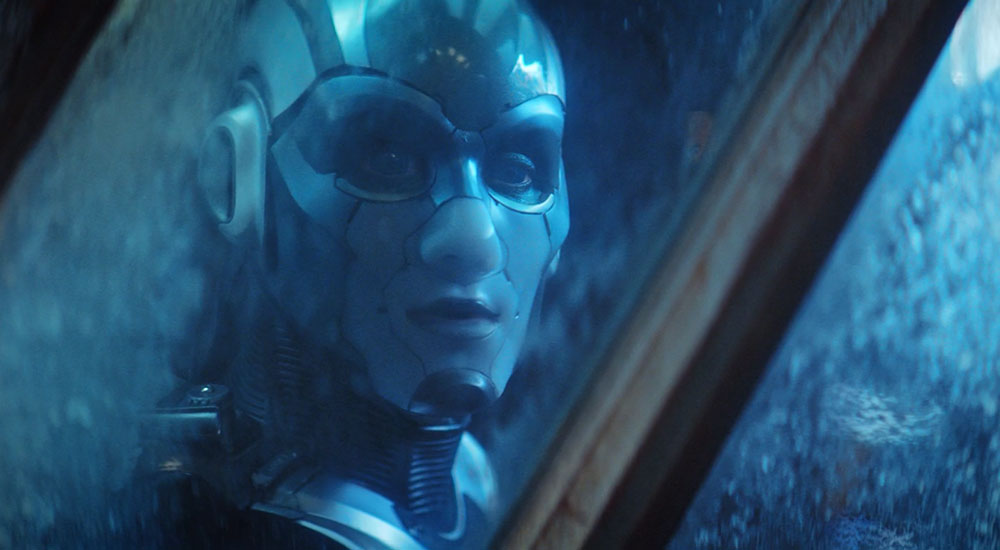
Airiam’s final moments in “Project Daedalus” (CBS)
The human/robot hybrid Airiam (Hannah Cheesman) also played a huge role in the season’s main plot. Infected by Control, she sacrifices herself to save Burham and company. While her characterization and demise was told mainly in “Project Daedalus,” a la an episode of The Walking Dead, the message her familial bond illustrated was perfectly Trek. If any character needed a Short Trek episode, it was Airiam! Taken together, character-centric moments are a dime a dozen in this season, and it is a major change from the laser-focused nature of season one on certain main characters. Last season, we only got our first good sense of the crew’s familial nature in “What’s Past is Prologue,” when Saru rallied the crew for the battle against the Terran Empire flagship.
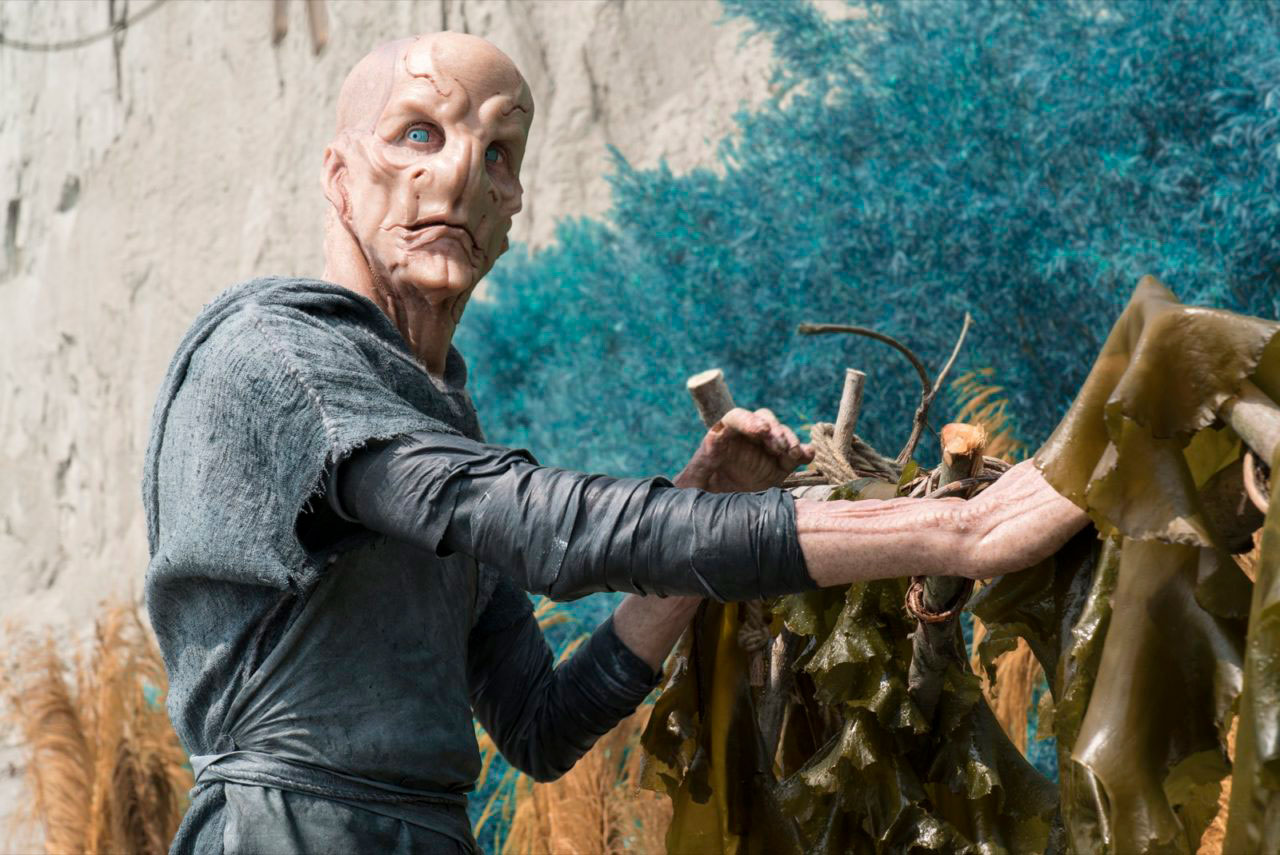
Doug Jones as Saru in “The Brightest Star” (CBS)
What’s past is prologue, indeed
A novel introduction to season two was the series of Short Treks that aired before the new season. These four 15-minute mini-episodes served to spotlight particular characters that we knew may or may not play a role in season two. As it turns out, two of the four Short Treks did indeed introduce characters and places seen in season two, and in retrospect, they did a great job providing a quick and effective introduction. Po (Yadira Guevara-Prip), who turned out to be a helpful character in the season’s finale, was featured alongside Tilly (Mary Wiseman) in the first Short Trek “Runaway.” Here, audiences gleaned a sense of Po’s internal emotional struggle and charismatic, rebellious attitude. Meanwhile, Doug Jones flexed his acting muscles playing Saru’s backstory in “The Brightest Star,” which turned out to be a direct prequel to “The Sound of Thunder.”
However, one Short Trek that we expected to tie more thoroughly into the season finale was “Calypso.” While we do now know why Discovery was seen hundreds of years in the future, it doesn’t explain why the crew evacuated the ship, or how the sentient AI, Zora, came to be. It very well may be that this particular Short Trek will actually tie more into season three, instead of season two. And finally, the Short Trek featuring Harry Mudd (Rainn Wilson), did not have anything to do with season two.
We know more Short Treks are coming, and with the expansion of the Star Trek universe underway, these mini-episodes will serve as great appetizers for both season three of Discovery, and other TV shows.
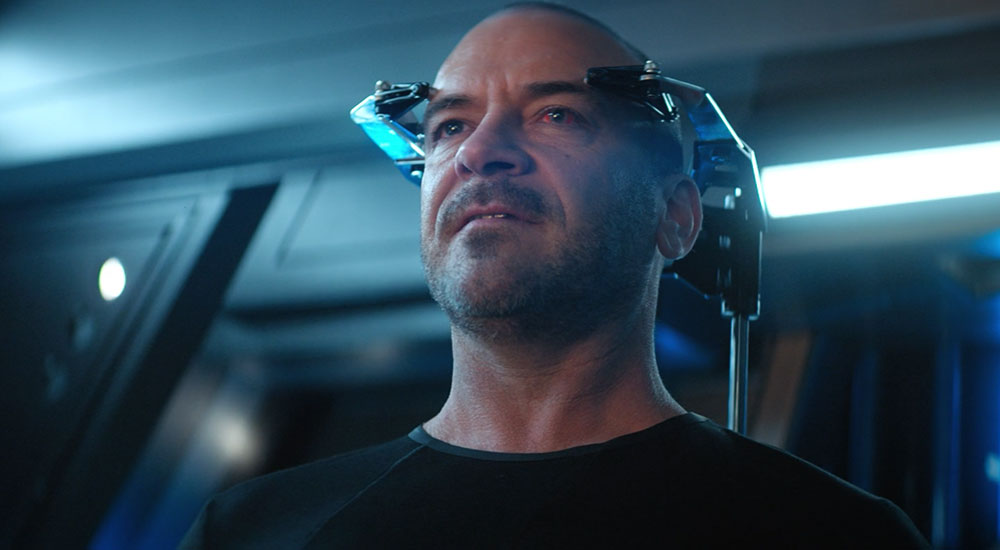
Leland being taken over by Control (CBS)
“There are always possibilities.”
This season leaves us with some major questions regarding Discovery and other Star Trek elements. A sneaky tease that the show’s writers incorporated into this season’s villain is the strong hint that Control could be a precursor to the Borg. Leland and Gant, both, ahem, assimilated by Control, use phrases similar to the Borg, and near the end of the season, the Control-infested Leland started audibly sounding more and more like a Borg. Combine that with Control’s use of nanites – and the visual of Leland and Gant repairing themselves during battle much like the Borg Cube in “Q Who” – and you have a solid argument that Control is somehow, someway related to our Delta Quadrant bad guys. The end of season two did not answer this theory or address it in any way, but we do know those nanites that ran through Leland are onboard the Discovery in its spore drive chamber. Considering this theory is grounded in such pointed and obvious references to Star Trek‘s favorite villains, it’s hard to believe season three won’t give this theory some legitimacy.
What we do know is that Phillipa Georgiou (Michelle Yeoh) is now onboard Discovery when it was launched hundreds of years into the future. This is a head scratcher considering Michelle Yoeh is heading the incoming Section 31 series. Does that mean the new show is a prequel to season two of Discovery? Or does Georgiou somehow make it back to the past on her own? Or maybe one of the Short Treks we expect this summer will explain this?
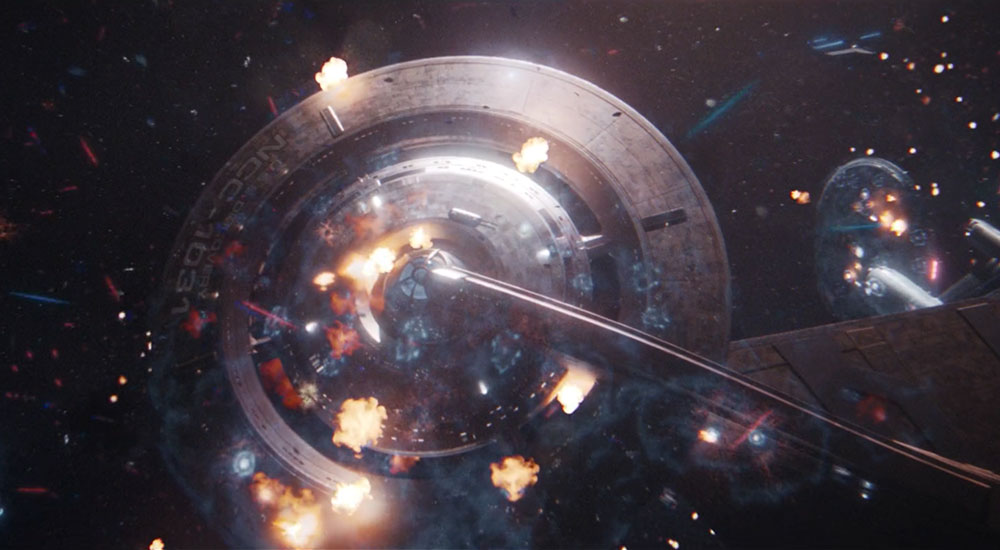
Discovery taking damage in the season two finale (CBS)
“All good things…”
After learning how season two ends and reflecting on the overarching narrative expertly told over 14 episodes, it is safe to say this season was a fantastic outing overall. Using “The Cage” as a catalyst to drive much of its narrative and re-introducing Captain Pike and Spock to the masses, season two will leave its mark on Star Trek fans thanks to its deep, lovingly characterized dramatis personae, flashy visual effects work (most notably that enormous space battle featuring the Enterprise in “Such Sweet Sorrow, Part 2“), and engaging overarching plot that puts a new twist on Star Trek time travel craziness.
Now, Discovery (the ship, as well as the show) is in quite a predicament. The crew is lost in space and time, hundreds of years ahead of everything they knew. But more than that, Discovery is now divorced from a key ingredient in its second season: fan nostalgia. Captain Pike, Spock, the Enterprise, D7 Klingon ships, the Talosians, Section 31, and a hundred other tiny references to past Star Trek was a major part of this season’s enjoyment. Discovery now has to carve out its own place in the Star Trek canon, away from the constraints (and benefits) of established lore.
With this constraint in mind, a prophecy foretold on a fortune cookie in the season premiere did indeed come true: “not every cage is a prison, not every loss is eternal.” Discovery thrived in the cage it placed itself in, and now, we can’t wait to see what happens now that it has broken out.
Star Trek: Discovery – Season 2 Overall Grade: A-
Stay tuned to TrekNews.net for all the latest news on Star Trek: Discovery. Connect with us on social media: @TrekNewsNet on Twitter, @TrekNews on Facebook, and @TrekNews on Instagram.
[amazon_link asins=’B07G2D87C1,B07BDMVY9X,B01M70T4WU,B01IG0H9JU’ template=’ProductGrid’ store=’treknenet-20′ marketplace=’US’ link_id=’1ba140eb-b068-11e8-a0c7-a19c0f8f92ee’]










































![2023: A banner year for Star Trek — here’s why [Op-Ed]](https://treknews.net/wp-content/uploads/2024/01/star-trek-2023-year-in-review-600x337.jpg)








![Star Trek: Starfleet Academy - Why I'm Ready to Enroll [Op-Ed]](https://treknews.net/wp-content/uploads/2025/08/star-trek-starfleet-academy-why-im-ready-to-enroll-op-ed-600x337.jpg)

![[REVIEW] STAR TREK: DISCOVERY - Season 2: Not Every Cage is a Prison](https://treknews.net/wp-content/uploads/2019/05/star-trek-discovery-season-2-review.jpg)
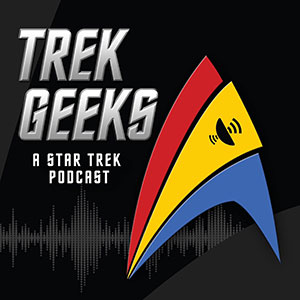





Paul Pisano
August 22, 2019 at 8:31 pm
i think the best thing about the show was pike. pike is a true hero. he sees what is going to happen to the point he falls backwards as he is terrified of the image he has seen. he decides to take the crystal anyways. imho it would have made more sense if after burnham goes through the wormhole everybody forgets what has happened. for pike to have to walk around knowing his future could drive somebody insane. pike’s only salvation comes in the 2 part episode the menagerie where spock manages to bring him back to talos IV. the talosians can give pike the illusion of being whole once again and vina is there waiting for him.
Ema M. Arredondo M.
August 22, 2019 at 8:31 pm
A thing: according to canon, the first glimpse of the Borg happened in Enterprise, episode Regeneration, when they find some Borg left from First Contact, and later Archer hears the famous “resistance is futile” hail in a transmission. Later, they find out a Borg communication was sent to the Delta quadrant giving Earth’s location.
Also, there is a mention of a planet of machines as the reason of V’ger upgrade from a probe to a sentient powerful entity, which many have understood as being the Borg.
Tom Sinclair
August 22, 2019 at 8:31 pm
i’m halfway in lol… so i didn’t catch the entire read here… but so far it’s been great… characters are fantastic and getting stronger… i love the season long arcs… it is so sad a bunch of trek fans can’t get on board… it reminds me of when tng premiered and many fans of the original wouldn’t accept it… same happened to ds9… trek fans pride themselves on being open minded and accepting of such stories trek delivers but many become closed and angry at the thought of change… it’s crazy because this show is so good. trek has always changed it’s aesthetic from decade to decade staying modern while still feeling like trek and this is 100 percent no different.
Doug Mann
December 20, 2019 at 3:06 am
Pike was the best thing about S2, followed by Spock and Number One, but NOT for nostalgia reasons. It’s because Pike and Spock acted as control rods in the nuclear reaction that was, in S1, Michael Burnham’s ego and narcissism. No more mutinies or starting interstellar wars and getting let off by Star Fleet, though Pike let her go off on dodgy shuttle missions a few times. Having said that, there were too many sappy relationship moments, and quite a few minor plot holes that didn’t make sense e.g. not using a transporter or shuttle to get people out of sticky moments such as the rogue photon torpedo in the last episode, or more broadly, the ignoring of temporal paradoxes.
I still find Burnham insufferable, but there were enough times that Spock or Pike stood up to her or told her she was just plain wrong that it was easier to swallow. Also kudos to Michelle Yeoh – she seemed to be smirking throughout the whole season, laughing with malevolence inside, though how she was able to fight Leland to a stand-still was ridiculous given their relative sizes and ages. Fewer cringeworthy SJW moments too, though still a few, like the mansplainer getting smashed on an asteroid. The proto-show seen at the very end, as a shaven Spock joins Pike and No. 1 on the bridge of the Enterprise, is the show I would like to see. Leave Burnham and the trendoids on Discovery’s bridge in a mysterious future.